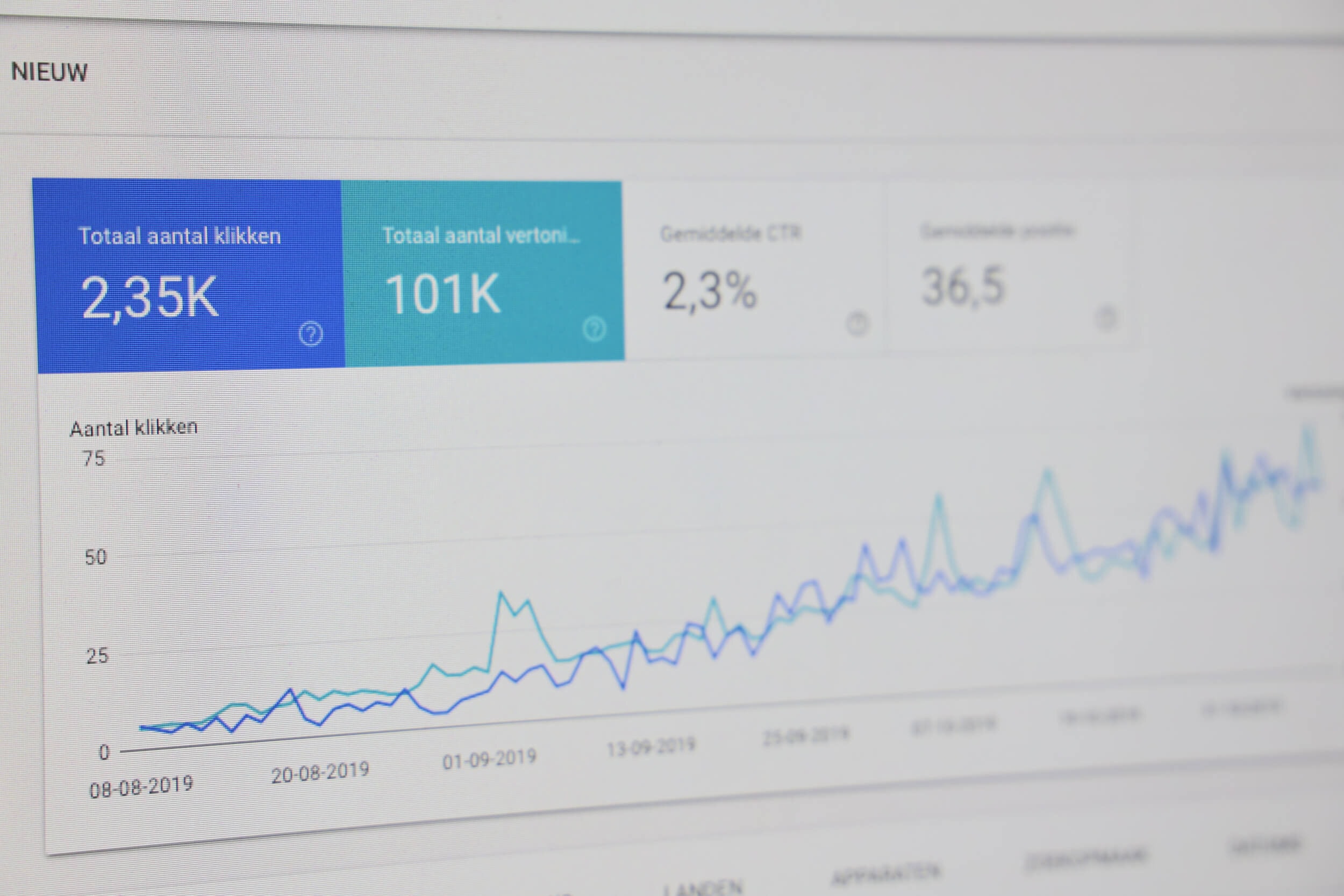Using Search Intent to Shape Your Digital Marketing Strategy
Your customers no longer depend on you to provide a traditional path through your marketing funnel. Instead, consumers now do their own research and take a unique to them, non-linear purchase journey to make an informed purchase decision.
Understanding your users’ search intent is key to your B2B digital marketing strategy. if you want to serve up relevant content to match where they are on their self-led buyer’s journey.
What Is Search Intent?
Search intent, or keyword intent, is the reason a user conducts a specific search. Do they want to learn something? Are they looking for a specific website? Trying to buy something? Researching a potential service provider?
Top search engines, like Google, are constantly refining their algorithms to figure out people’s search intent so they can rank pages that provide the most relevant information possible.
Sign up for our newsletter
Get the latest news and ideas from 1827 Marketing sent directly to your in-box.
You will receive an email from us every couple of months, and you can opt out at any time.
We can not stress enough just how important the concept of search intent is to SEO. It’s no exaggeration to say that it is a critical factor if you want your content to rank these days.

Why Search Intent Matters
Historically, SEO has been a numbers game, where the goal is ranking higher. This is because most people will only look at the first page of results. In fact, the first five organic results on a search engine results page account for 67.6% of all clicks. If the first page doesn’t contain what they want, most people will change their query instead of checking the second page. By driving more website traffic, businesses increase their likelihood of converting customers and generating more sales.
Factors like search volume and competition previously determined what keywords to use. However, with increasing search engine sophistication (aided by AI), these factors are now secondary to the intent behind the search.
Advances in semantic search mean search engine understanding of intent goes much further than showing results that contain a specific keyword. Rather, they are constantly learning based on how users search, and how they interact and rate search results. Google alone now processes over 40,000 search queries every second, which amounts to a lot of data about what searchers want.
For instance, Google understands that people searching for “sourdough starter” most likely want instructions, not a blog on the history of sourdough bread. Or that most people looking up “Mercury” want information about the planet, not the chemical element.
This is why tactics like keyword stuffing or backlinking no longer result in your content ranking consistently on search engine result pages (SERP). Search engines are now smart enough to determine content and format relevancy. If it sends people to a page they don’t find useful, they’re going to quickly navigate away. This signals to the search engine that the content they provided was not relevant and should, therefore, be ranked lower.
Search intent marketing and content relevance are now at the root of SEO success. For instance, SEO research shows that people click on results that mirror their search phrase.
Search intent has a broader significance to your digital marketing efforts, not just for SEO but also your content marketing, PPC, and even on social media. By aligning content to search intent you:
Create a more relevant experience for your audience
Increase brand awareness
Drive conversions and retention
Understanding different types of searches means you can create a better customer experience with your content.
Related Content:
What Are the Four Types of Search Intent?
As Google layouts in their search quality guidelines online searchers want to do something, know something, or go somewhere. In other words, search intent can be defined by four major categories: informational, navigational, transactional, and commercial investigation.
Informational Intent – to Know Something
Lots of searches on the internet are done by people looking for information. If you can think of a question, someone has probably searched online for an answer. That could be the weather forecast, stock market updates, an explanation for why the sky is blue, you name it.
People with informational intent want to know more about a certain topic or get an answer to a specific question. Keep in mind that not all informational searches are formulated as questions. The point is that the searcher is looking for information.
Examples of informational searches:
“intent marketing google”
“how to conduct keyword research”
“smart SEO tactics”
Navigational Intent – to Go Somewhere
People who want to visit a specific website (or location) are searching with navigational intent. These searchers already know where they want to go, but might not know the exact URL. Or it’s just quicker and easier for them to search the name than to type in the address bar. This means ranking high for a navigational term is only beneficial if you are the site the person is looking for.
Examples of navigational searches:
“LinkedIn login”
“1827 amplify tools”
“Google”
Transactional Intent – to Do Something
When people browse the web to find the best purchase and buy stuff, they’re searching with transactional intent. They already know what they want to buy so they’re looking for landing pages or a specific product page to help them along their purchase journey.
Examples of transactional searches:
“Buy Sprinter panel van”
“ProtonVPN corporate rate”
“Office furniture wholesale”
Commercial Investigation – to Do Something Later
Commercial investigation refers to people with transactional intent for the (near) future, but who need some more time and convincing. They are doing their research, but haven’t yet made a final decision on which solution is right for them. Since they’re still weighing up their options, they’re most likely looking for reviews and comparisons.
Examples of commercial investigation searches:
“QuickBooks vs Xero”
“SharpSpring platform review”
“Best happy hour in London”

How to Identify Search Intent
Search intent is often obvious from the types of keywords the searcher uses
Search intent is often obvious from the types of keywords the searcher uses.
To quickly review, keyword phrases can have up to three basic parts: head, tail, and modifier (the exact order doesn’t matter).
To give an example, let’s say we enter the search query “purchase marketing automation platform”. Here the keyword would be made of the following elements:
modifier | tail | head
Platform is the head of the keyword. This is the focal point of the search, the subject that the rest of the keyword parts relate to.
The tail comprises supporting keywords that clarify or add further detail to the head term. Here we are specifying that we want a marketing automation platform – not a social amplification platform.
The modifier changes a single aspect of the keyword’s meaning – but without altering the primary search topic. In this example, purchase is the modifier.
Changing our search query to “marketing automation platform reviews” does not overtly change our search – we’re still focused on marketing platforms. However, it modifies the intent of what we want to accomplish from purchasing to researching. As you can see, this can dramatically affect what type of content we would expect to see in the search results.
Keyword Mapping by Intent
When conducting search intent research, we highly recommend including a step where you segment based on different intent modifiers. From there, you can use additional filters, such as search volume or competition level. This will help you dial into relevant search terms to match your brand’s content to the desired audience search intent.
To start, here’s a shortlist of the types of search intent and some of their most common keyword modifiers.
Mapping Content to Buyer’s Journey Stages
Informational | Navigational | Transactional | Commercial |
|---|---|---|---|
Who is | Brand name Address Product name Service name Location Login Website | Buy Coupon Order [location] store hours Purchase Cheap Price Discount Deal Quote Packages | Best Top Review Comparison Most popular Highly rated Recommended Favourite Call Request |
Another key step in your keyword research should match search intent to your customer journey so you can create content accordingly. As previously mentioned, the tidy, one-way sales funnel model is dead. However, consumers still generally complete the following stages when making a purchase decision (albeit in any combination):
Awareness – A prospect realises they have an issue and decides something needs to be done.
Search – The person might do some brainstorming, go to their social circle for input, or perform a top-level web search for options.
Evaluation – The buyer gathers information and compares and contrast various potential solutions.
Experimentation – The prospect has formed opinions of the direction they want to take and is now trialling potential providers. They want a better sense of which relationship will work the best.
Purchase – A decision is made and expectations are set for future interactions.
Commitment – The initial purchase is completed and the focus shifts to maintaining a strong relationship over the long term.
Someone might bounce from awareness to search to evaluation, only to go back to search, before jumping to the purchase stage. The exact order of the buyer’s journey is unique to the circumstances and needs of each prospect.
Your content for each stage must match the prospect’s search intent, engage them, and provide relevant information. For instance, use informational intent search terms in content intended for each customer journey awareness stage. Or transactional target keywords for content like landing pages or sales material during the purchase stage.
Customer journeys can be complicated, so mapping search intent and content to different stages helps you plan how to engage at each touchpoint. It places each individual interaction into a broader narrative, creating a positive experience that motivates the individual to progress onward.
Learn more:
How to Optimise for Search Intent

The entire point of digital marketing is to provide your prospects with content that they find relevant and engaging. Search intent keyword research is a critical tool for helping you accomplish that.
Your content needs to match the prospect’s search intent to provide them with the best experience possible. You want them to feel that you understand their needs and are providing a solution. This is why search intent should shape your content marketing.
Here are three best practices you can implement to help you hone in on search intent for your content marketing and increase traffic to your website.
Take Cues From Top-ranking Pages
Search intent research for content optimisation should always include a SERP analysis. To start, look at what types of pages are dominating the SERP for your query – for instance, blog posts, product pages, or landing pages. Also pay attention to the media type (i.e. video, text, audio) and content format. Is it a how-to guide, a listicle, an opinion piece, a product comparison, etc?
When creating your content, it makes sense to take cues from consistently top-performing pages. Remember, search engines produce the most “helpful” results based on historical data and ranking signals for search intent.
If most of the top-ranking content are tutorial blogs, create a tutorial. If product walk-through videos dominate the top results, follow suit. By identifying what works for the searches you want to rank for, you can align your content with searcher’s expectations.
Where you want to stand out is with your content angle. This is the unique selling point (USP) of your content that speaks to the needs, values and interests of your target audience.
For instance, if we search for “how to make shortbread” we can see the same types of content come up in the results. However, each of the top results presents a fresh angle. To highlight a few:
“Scottish shortbread recipe”
“Classic butter shortbread”
“Secret to the best shortbread”
“Three ingredient shortbread”
Also, look at the selling points of competitor content to get a sense of what your target audience finds important. For instance, what are top pages emphasising? Price, quality, fast service? Breaking with convention might gain people’s attention, but it could just as easily cause them to find your content less relevant. The trick is to note what others are doing and gather ideas to test for future optimisation.
Look at Featured Snippets
Look at what featured snippets show up when you Google your target keywords. These are bits of useful information that appear at the top of the page in response to certain types of queries. They’ll often appear as:
Shopping results
Knowledge card
Shopping ads
Related questions
Video results
How frequently Google will show certain SERP features depends on the most likely intent of the search. Featured snippets like knowledge cards appear for informational queries. Meanwhile, shopping ad carousels usually only show up for searches with high transactional intent.
And if the “People also ask” box appears in your search, pay close attention. This snippet is a goldmine of search intent information. It is literally telling you the questions people have around your keyword subject. Providing relevant answers to these questions will go a long way towards improving your content SEO.

Improve Existing Content and Optimise for User Experience
Don’t limit search intent research to new content production. One of the most effective ways to improve your organic traffic levels is to re-optimise existing content on your site. An in-depth SEO audit will help you identify content that already matches user intent, and opportunities to improve.
Besides aligning your content with search intent, make sure you optimise it to provide a great experience by:
Limiting popups: People don’t like popups and neither do modern search engines .
Using a readable font: If your content is hard to read, people are going to bounce.
Using subheadings: Skimming your content for the main points lets people find their answers fast. This is especially important for long-form pieces, like pillar content.
Using videos and images: A picture (for video) is worth a thousand words, especially when it comes to understanding complex data sets and creating emotional engagement.
Make everything mobile-friendly. Mobile accounts for roughly half of global internet traffic .Ensure images and videos load quickly and that content resizes correctly on different screen sizes.
Is Your Content Optimised for Search Intent?
Search intent is perhaps the most important ranking factor for modern SEO. If your content isn’t already optimised for search intent, start now.
Even if you do rank for a short time with low-quality content, search engines will eventually figure things out and then your rankings will go down like a lead balloon. Make it your mission to give searchers what they want, not only by including relevant keywords but by matching their intent to content they’ll truly value.
To learn more about search intent and content optimisation, contact 1827 Marketing. We provide services and tools to easily produce high quality, relevant content for more human experience.
Have a B2B marketing project in mind?
We might be just what you’re looking for






